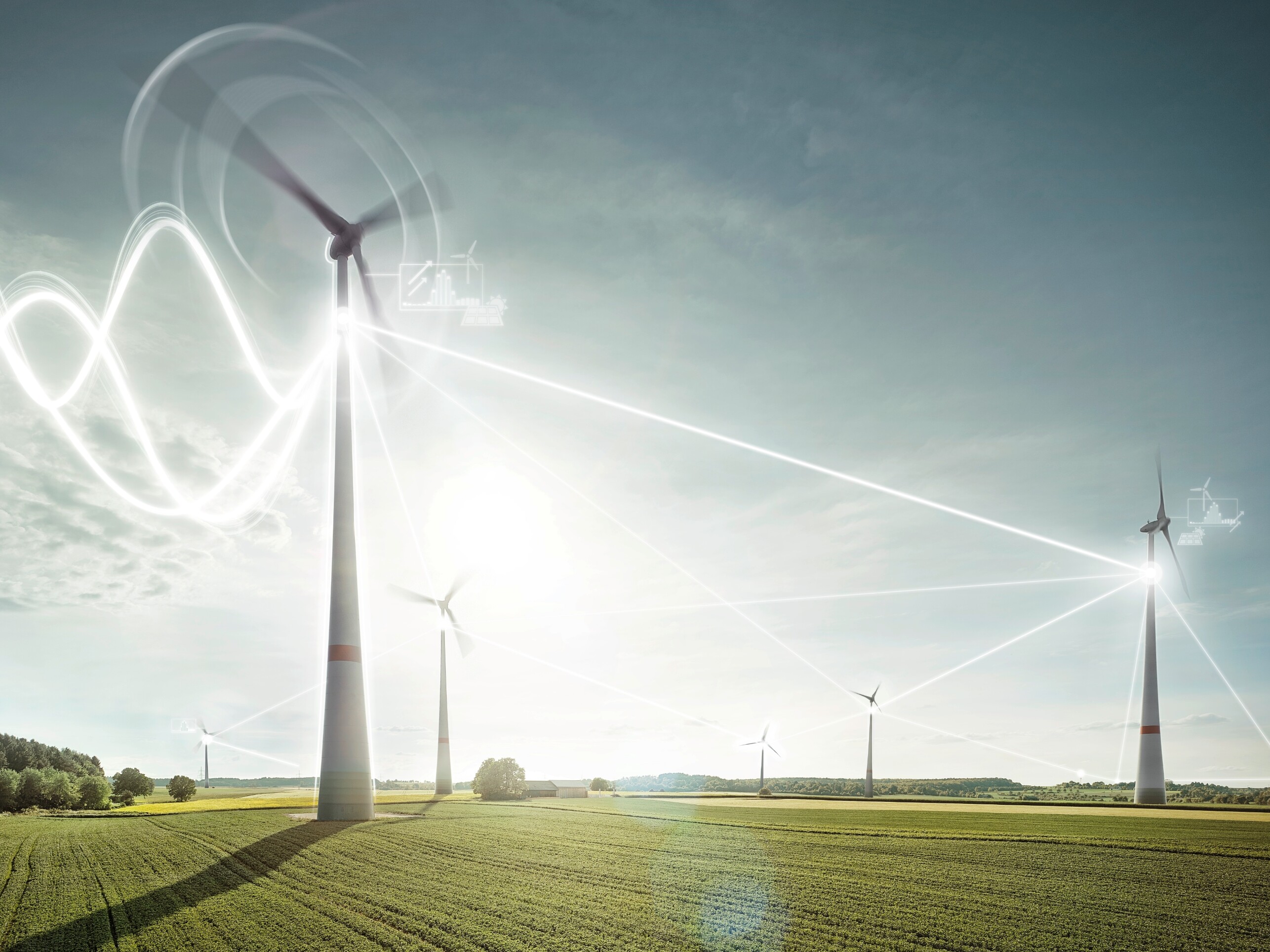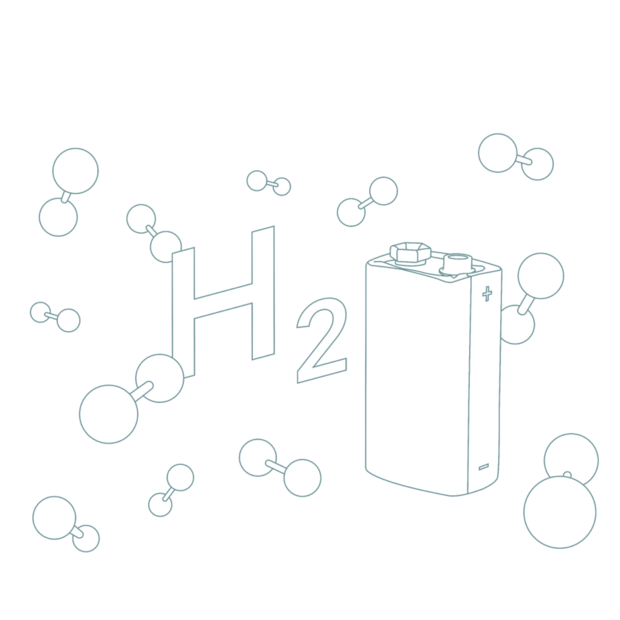Innovation
Smart System
The grid thinks for itself
Smart System - The grid thinks for itself
“50-80-90” – those are the ideal dimensions for the energy transition in Baden-Württemberg. Energy consumption is to be reduced by 50 percent by 2050 and 80 percent of demand is to be covered by renewable energies. CO2 emissions are to be reduced by 90 percent compared to 1990. The world of energy is changing at a dizzying pace. The number of renewable energy generating plants is constantly increasing. With biomass, wind parks and photovoltaic systems, the proportion of energy produced by conventional power stations is falling, while generation is becoming decentralised and the feed-in volumes remain volatile. In sun-blessed Baden-Württemberg, a total of some 300,000 decentralised photovoltaic systems now feed into the grid, but only when the sun is shining. At the same time, consumer behaviour is becoming more complex due, for example, to e-mobility and new storage solutions.
Metaphorically speaking, we can say that the one-way electricity street of the past has become a closely intermeshed network of multi-lane electricity highways with high-density traffic travelling in all directions and involving road users with all types of different mobility.
And this changes the tasks we have to perform as transmission grid operators. As the number of actors in the market and the number of systems connected to the grid grow, so too does the need to implement a wide range of high-quality control processes. Along with the need for us to be fully aware of our market-related tasks. What we need is a versatile network. That is why we are not just expanding our grid; we are also making it intelligent. SMART SYSTEM is our solution for the energy control of the future.
Smart System = Smart Grid + Smart Market
The lines in our SMART SYSTEM carry not only electricity but also information relating to system control and the corresponding markets. The grid of the future knows what's going on. That is the result of the close cooperation between our systems operations and grid management activities that control our transmission using digital information and communication technology and give us the overview we need. Smart Grids is the name we give to these intelligent grids. They help us to ensure a permanent balance between electricity generation and consumption. And they also help us to coordinate the technical and organisational communication with the actors in the energy supply system – between generators and consumers, between transmission and distribution grid operators, between national and European market stakeholders.
In the same way as Smart Grids, we are working on the development of Smart Markets – intelligent markets with clearly assigned roles and coordinated collaboration between all partners and across all technical voltage limits. In addition to the traditional actors in the energy supply system, end customers are now entering the equation for the first time and are being incentivised to adapt their electricity consumption flexibly by means of price signals. Through our participation in the C/sells and Callia research projects, we are supporting the large-scale testing and demonstration of intelligent networks in combination with intelligent markets. In this context, we are concentrating primarily on the effective interconnection of Smart Grids and Smart Markets – to form the innovative SMART SYSTEM.
C/sells – the showcase for tomorrow’s photovoltaic market
The first intelligent solutions for a successful energy transition already exist. The question now is how to ensure a successful interaction between all market stakeholders across the different voltage limits and even across national borders. To drive the interconnection of the generation, distribution and consumption of renewable energies forwards using a digital grid infrastructure, that is to say to make the intelligent grid fit for everyday use, we are taking part in C/sells, the south German model project undertaken as part of a nationwide programme funded by the German Ministry for Economic Affairs and Energy (BMWi).
C/sells focuses on the feed-in of electricity from decentralised solar energy sources in the German states of Baden-Württemberg, Bavaria and Hesse. Because, even now, approximately half of Germany’s solar power comes from the south of the country. In C/sells, the “showcase for intelligent energy”, we are working together with 70 or more partners from industry, the energy sector and science to test large-scale model solutions for the automated, coordinated harmonisation of grid and market as well as between the individual network cells at all voltage levels. At the level of small regional units known as cells, the focus is placed on the assignment of roles, compliance with legal requirements and statutory activities, business processes, intelligent measuring technologies and cross-border cooperation.
TransnetBW is working in eight different specialist areas in the C/sells project. We are working on many different issues, focusing primarily on the examination of data protection-related questions, the future provision of system services and the configuration of a versatile electricity market. For example, we are working on optimising load forecasts for photovoltaic feed-in capacities in order to be able to achieve greater reliability when planning the efficient use of solar energy.
Callia – focusing on Europe’s energy targets
TransnetBW explored a smart system approach at the European level in the three-year project Callia, which was co-funded by the German Federal Ministry for Economic Affairs and Energy (BMWi). Up to 2019, we developed a holistic concept for an automated and regionalised use of flexibility, together with twelve partner organisations from Belgium, Germany, Austria and Turkey.
The market-integrated approach we chose for coordinating flexibility between systemoperators during bottleneck situations on the grid makes a close collaboration between transmission and distribution system operators for stabilising the pan-European electricity system easier. They demonstrated the technical communication link of decentralised plants as well as the Callia market in field trials for automated control of decentralised plants in the low-voltage grid, based on a market signal, in Heidelberg and Istanbul. We brought the TransnetBW expertise on grid management and market organisation as well as products for system services to the table and actively participated in the work on the role model as well as the market design.
In this way, we want to achieve the overarching goal of minimising the reduction of energy from renewable power plants being fed into the grid. To this end, we have developed a mathematical model that finds a systemic optimum via local trading markets and, at the same time, resolves bottlenecks on the grid as far as possible during the trading stage. We are thus creating a smart grid for Europe through a smart market – across all national boundaries.
Innovation
How does TransnetBW use innovations to contribute to the energy supply of tomorrow? How do we meet demand for a more flexible, high-performing grid for the energy transition? By carrying out pilot and model projects as well as developing new technologies and processes in order to work towards a reliable energy supply in the future.
Read more about our innovative projects under “Innovation – fit for the future”.

